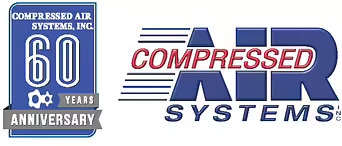
9303 Stannum StreetTampa, FL 33619-2658
Toll: 855.464.8525
Ph: 813.626.8177
Fx: 813.628.0187
Email: info@compressedairsystems.com

Shipping Weight |
N/A 2975 lb |
Feed at 90 psig (99.99 Purity) |
N/A 168 scfm |
Output at 70 psig (99.99 Purity) |
N/A 1366 scfh |
Feed at 90 psig (99.9 Purity) |
N/A 165 scfm |
Output at 70 psig (99.9 Purity) |
N/A 2194 scfh |
Feed at 90 psig (99.5 Purity) |
N/A 157 scfm |
Output at 69 psig (99.5 Purity) |
N/A 2610 scfh |
Feed at 90 psig (99.0 Purity) |
N/A 179 scfm |
Output at 68 psig (99.0 Purity) |
N/A 3263 scfh |
Feed at 90 psig (98.0 Purity) |
N/A 195 scfm |
Output at 65 psig (98.0 Purity) |
N/A 4033 scfh |
Feed at 90 psig (95.0 Purity) |
N/A 218 scfm |
Output at 57 psig (95.0 Purity) |
N/A 5220 scfh |
Feed at 110 psig (99.99 Purity) |
N/A 191 scfm |
Output at 90 psig (99.99 Purity) |
N/A 1553 scfh |
Feed at 110 psig (99.9 Purity) |
N/A 183 scfm |
Output at 90 psig (99.9 Purity) |
N/A 2494 scfh |
Feed at 110 psig (99.5 Purity) |
N/A 178 scfm |
Output at 88 psig (99.5 Purity) |
N/A 2966 scfh |
Feed at 110 psig (99.0 Purity) |
N/A 204 scfm |
Output at 86 psig (99.0 Purity) |
N/A 3708 scfh |
Feed at 110 psig (98.0 Purity) |
N/A 222 scfm |
Output at 80 psig (98.0 Purity) |
N/A 4584 scfh |
Feed at 110 psig (95.0 Purity) |
N/A 247 scfm |
Output at 75 psig (95.0 Purity) |
N/A 5932 scfh |
Minimum Storage Capacity (Air) |
N/A 240 gal |
Minimum Storage Capacity (N2) |
N/A 240 gal |
Voltage |
N/A 100 V115 V120 V |
Phase |
N/A 1 |
Power Supply Frequency |
N/A 50 Hz60 Hz |
Inlet Ports |
N/A 2 in |
Outlet Ports |
N/A 1 in |
Maximum Inlet Pressure |
N/A 150 psig |
Height |
N/A 90 in |
Width |
N/A 86 in |
Depth |
N/A 45 in |
|
N/A
Beer & Wine Manufacturing & Storage |
|
N/A
75% to 92% Cost Savings
An average GN2 system has an (ROI) return on investment of 6 to 18 months. This rapid return enhances the financially attractive position of a GN2 system above and beyond the 75% to 92% base reduction in nitrogen cost. Reliability GN2 systems operate automatically and supply nitrogen on demand 24hours a day. A missed nitrogen delivery due to bad weather or clerical oversight can dramatically impact production costs. Nitrogen Purity GN2 systems can produce nitrogen purities from 95.0%to 99.99%. If your application can operate at lower purities the cost of production is reduced and can add to your overall reduction in nitrogen costs. Safety GN2 systems operate with no more liability than a standard compressed air system. With a GN2 system you yield the liability of handling 2,200 PSI cylinders or storing -320°F(-196°C) liquid nitrogen. Experience Great Lakes Air has over 25 years of experience manufacturing various types of standard and custom PSA (Pressure Swing Adsorption) systems for many industries such as: Petrochemical, Automotive, Mining, Defense, Pharmaceutical, Aerospace, Electronics, Food & Beverage, Steel Production, Medical Industry. The GN2 Nitrogen generator is a PSA system that separates the oxygen from a compressed air supply generating a continuous source of gaseous nitrogen. |
|
N/A
The earth’s atmosphere is comprised of approximately 78% nitrogen and 21% oxygen. Once atmospheric air is compressed, its pressure is increased while proportions of nitrogen and oxygen remain unchanged. Once the air is compressed it must be filtered and dried prior to its introduction to the GN2 system. |
|
N/A
|
|
N/A Custom designed, larger capacity or non standard purity systems are available upon request
|